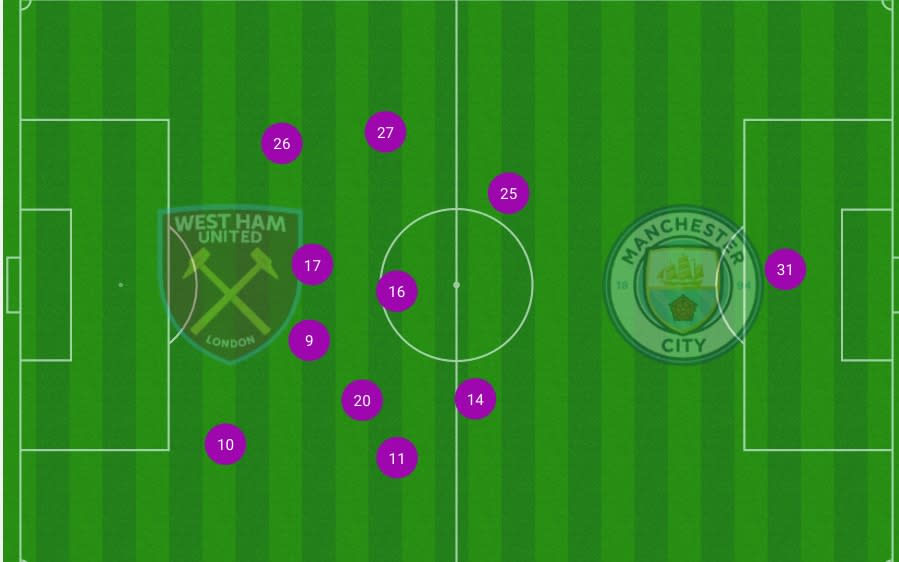Erling Haaland has already changed Man City's style – and made them far more dangerous

For much of this summer, the footballing world has wondered how Erling Haaland will adapt his game to suit Manchester City. Perhaps we have all got it the wrong way round. For the main lesson from City’s opening-weekend win at West Ham United was not that Haaland is changing for his new team, but that they are changing for him.
There was no better example of this than the Norwegian’s second goal at the London Stadium, when City surged from one end of the pitch to the other. Within the space of two passes, the ball had travelled from the edge of City’s own penalty box to the back of West Ham’s net, with Haaland wheeling away in celebration.
It was the sort of goal Haaland scored so often for Borussia Dortmund — of his 86 goals in Germany, 33 came after he had run in behind the opposition defence — but not the type of move we have become accustomed to seeing from Pep Guardiola’s side. City are many things under Guardiola but they have rarely been an incisive counter-attacking force.
Haaland changes that, and his explosiveness off the ball will be a source of considerable fear for defences across the Premier League. Once he takes off, there is no catching him. This was evident on his second goal, when Ben Johnson and Kurt Zouma were left trailing in his wake, and also in the build-up to the first-half penalty, which Haaland won and converted.
There are few weapons as devastating as genuine pace, and Haaland’s acceleration already appears to be a game-changing attribute for this City side. It is not a weaving, dribbling sort of speed, which is often seen with dynamic forwards, but a raw, straight-line, off-the-ball, sprinter-esque velocity. From first gear to fifth, in an instant.
Before the defenders know what is happening, he has gone. Combine that with quality service, as Haaland had from De Bruyne and Ilkay Gundogan on Sunday, and it is a truly formidable force.
Haaland is genetically blessed, of course, and his speed off the mark is a gift that separates him from almost every footballer on the planet right now. But these runs are also a sign of his mental quality: the timing of the movement, the appreciation of the space. At the start of his run that led to the penalty, Haaland glanced over his shoulder to calculate the positioning of the opposition defence. It is known in football as “scanning”, and experts in the field have long identified Haaland as a master of the art.
The beauty of Haaland’s performance at West Ham was in its decisiveness. He only touched the ball 32 times — 14 times fewer than goalkeeper Ederson, and almost 100 times fewer than full-back Joao Cancelo — but when the moment arrived for him to dart in behind, he made the killer run and promptly received the killer pass.
The willingness of City’s midfielders to play these passes is one indication of the shift in the team’s collective approach. The other is the positioning of Guardiola’s full-backs, Cancelo and Kyle Walker. We are used to seeing one City full-back tucking into midfield, but on this occasion they had two: the average positions of Walker (No 2) and Cancelo (7) showed them to effectively be playing as central midfielders alongside Rodri.

City’s average positions against West Ham in May, by contrast, show that the two full-backs (Cancelo, 27, and Oleksandr Zinchenko, 11) were their widest players on the pitch. On that occasion City packed the midfield in a different way, with striker Gabriel Jesus (9) dropping in to play as deep as Kevin De Bruyne (17), and much deeper than the two wingers.

By playing Haaland in their attack, City have effectively lost a body in midfield. On the evidence of Sunday’s victory at the London Stadium, Guardiola has resolved that particular problem by inserting another full-back into the centre of the pitch. In possession, it is effectively a 2-3-4-1 formation, with Haaland simply waiting for his moment to strike.
As ever with Guardiola, there will be tweaks for each game. Sunday’s formation is not necessarily the formation we will see in every match for the rest of this campaign. It is a clear shift of the team’s positioning, however, and it is evidently designed to get the best out of the new man at the top of their attack.
On this evidence, at least, Haaland is not going to change his game to become more like a City player. Instead, City seem to be changing theirs, to become more suited to a player of Haaland’s unique strengths. There will be days, no doubt, when it does not work so smoothly. But when it functions as effectively as it did on Sunday, it will be almost impossible to stop.

 Yahoo Movies
Yahoo Movies 
